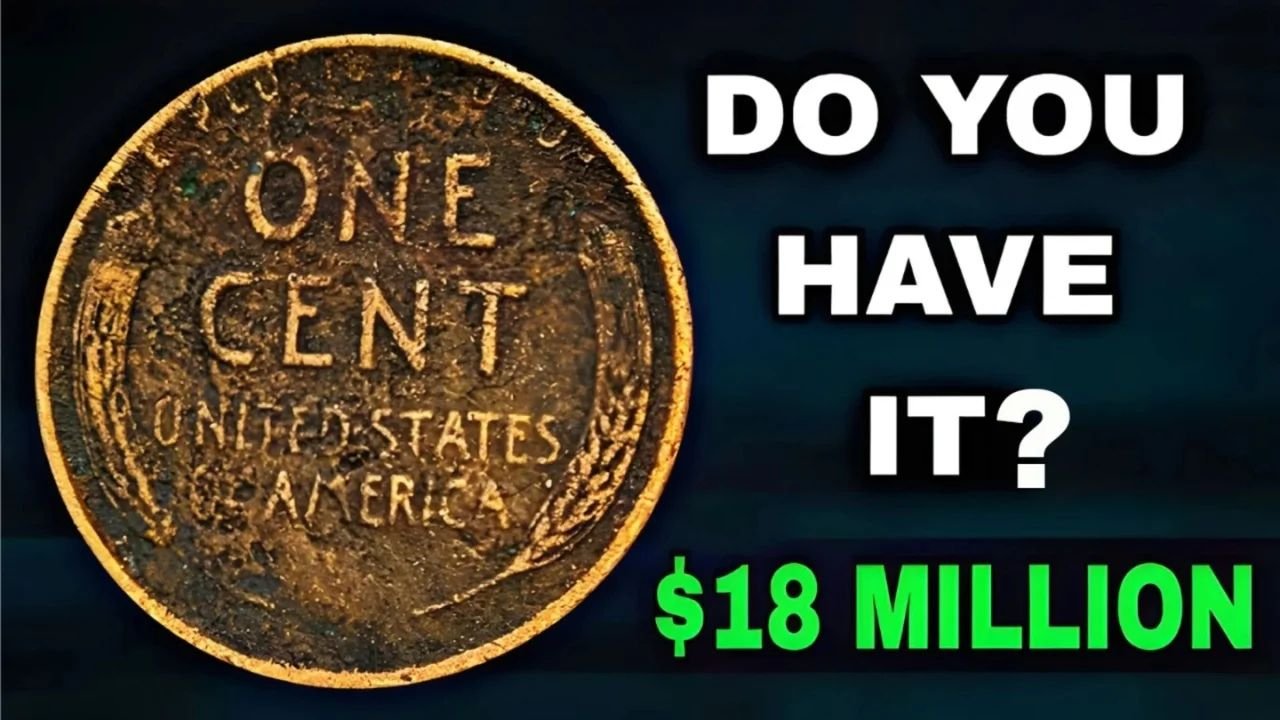Wheat pennies might look like ordinary one-cent coins, but many hold surprising value. Over the past decade, collectors have watched certain wheat pennies rise dramatically in price — turning pocket change into profit. Whether you’re a casual saver or a serious numismatist, knowing which coins to look for can make all the difference.
What Are Wheat Pennies?
Wheat pennies — officially called Lincoln Wheat Cents — were minted from 1909 to 1958.
They feature:
- Front (Obverse): Abraham Lincoln’s portrait
- Back (Reverse): Two stalks of wheat symbolizing prosperity
While each coin’s face value is only one cent, their collectible worth can reach thousands depending on rarity, errors, and condition.
A Brief History of the Lincoln Wheat Cent
The U.S. Mint introduced the Lincoln penny in 1909 to commemorate Lincoln’s 100th birthday. Designer Victor David Brenner added his initials “VDB” on the first edition, sparking both interest and controversy.
Over time, mintmarks, die variations, and production errors made several issues scarce — turning simple coins into numismatic legends.
Why Wheat Pennies Are Valuable Today
Several factors make wheat pennies desirable:
- Low Mintage Years: Fewer coins mean higher demand.
- Mint Errors: Mistakes like missing mintmarks or doubled dies boost rarity.
- Historical Appeal: Over a century old, these coins represent an era of change and craftsmanship.
- Steady Appreciation: Over the past 10 years, average prices rose 20–30%, with top coins increasing much more.
Top Valuable Wheat Pennies (2025 Update)
| Coin | Key Feature | Value Range (2025) |
|---|---|---|
| 1909-S VDB | Rare initials “VDB” | $1,000 – $50,000+ |
| 1914-D | Low Denver mintage | $300 – $100,000+ |
| 1922 No D | Mintmark error | $2,000 – $50,000+ |
| 1931-S | Scarce San Francisco issue | $150 – $4,000+ |
| 1943 Copper | Copper used by mistake during WWII | $50,000 – $1,000,000+ |
| 1955 Doubled Die | Doubled image on date | $500 – $50,000+ |
| 1917-D | Low mintage | $100 – $2,500+ |
Wheat Penny Value Growth (2013–2023)
| Type | 2013 Avg. Value | 2023 Avg. Value | % Increase |
|---|---|---|---|
| 1909-S VDB | $10,500 | $18,000 | +71% |
| 1914-D | $6,000 | $12,500 | +108% |
| 1922 No D | $15,000 | $28,000 | +87% |
| 1931-S | $450 | $1,200 | +166% |
| 1943 Copper | $500,000 | $750,000 | +50% |
| 1955 Doubled Die | $8,000 | $20,000 | +150% |
Collector Tips for Finding Hidden Value
- Check Old Jars and Rolls: Many valuable pennies hide in plain sight.
- Inspect for Errors: Look for doubled dates or missing mintmarks.
- Get Certified: Coins graded by PCGS or NGC often sell for premium prices.
- Store Properly: Use holders or albums to protect from corrosion.
- Start Small: Even common wheat pennies can grow in value over time.
FAQs About Wheat Pennies
Q1: Are all wheat pennies valuable?
A: No — most are worth a few cents. Only rare dates, errors, or mintmarks command high prices.
Q2: Can I still find wheat pennies in circulation?
A: Occasionally, yes — especially in older coin rolls or inherited collections.
Q3: What’s the rarest wheat penny?
A: The 1943 Copper Penny, valued at up to $1 million, is considered the holy grail.
Q4: How can I sell my wheat pennies?
A: Use certified coin dealers, reputable online auctions, or local coin shows.
Q5: Does cleaning my coins increase their value?
A: No — cleaning can reduce value. Always leave coins in original condition.
Conclusion: Turn Your Change Into a Treasure Hunt
Wheat pennies remind us that small things can hold big value. From the legendary 1909-S VDB to the ultra-rare 1943 Copper, these coins continue to capture collectors’ hearts and wallets. Take a moment to check your coin jars, wallets, or family collections — your next wheat penny find could be worth far more than a cent.

